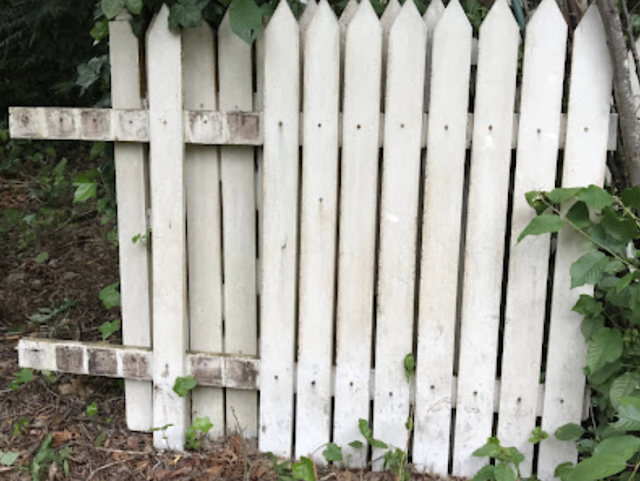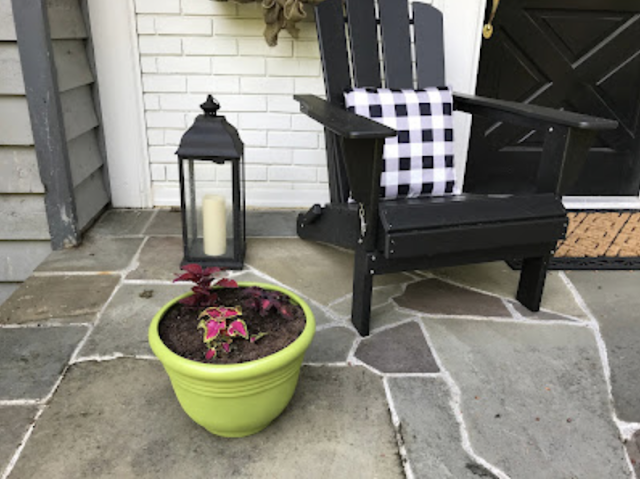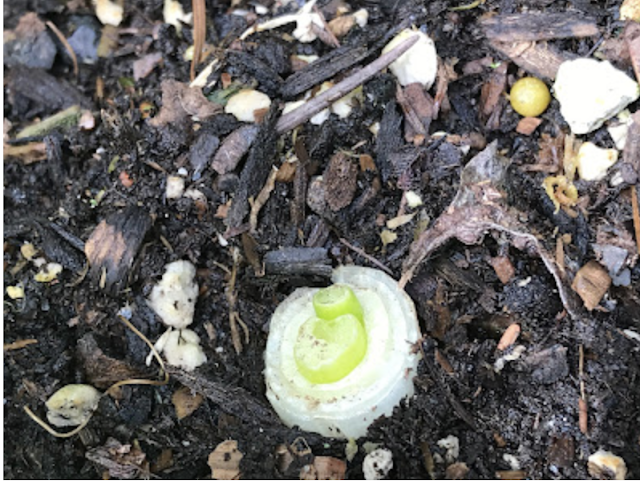Thank you, friends, for hanging in there with me while I took several days off from blogging recently
I didn't have a guide for how or what to eat, with the exception of it needed to be soft, non-spicy (I interpreted this to mean non- heat spicy, not no spice at all like cinnamon), smooth, and chilled or cold for the first 24 hours (heat and spice can increase bleeding). I was instructed to stick with soft and smooth for several days as the incision area healed. You'll see that by the end of the week I was not only eating more variety and texture, but more volume of food.
As to what I could eat, that was up to me. Weeks earlier, I thought through some possibilities that would work for our budget and my tastes. Family members gifted me with suitable foods that I may have been reluctant to buy for myself due to cost. Otherwise, I primarily chose foods that we had on hand.
All of my meals at the beginning of the week were different from what my family was eating. At first, they took turns cooking for themselves and making food for me. Later in the week, I was able to make my own breakfast and lunch, plus modify my own dinner to work for me. By the last day, I was once again cooking dinner for the family, just modifying my portion.
Day 1
lunch
post-op first "meal"-- supposed to be cold foods for the day
baby food fruit puree pouch stirred with applesauce
pumpkin pudding (a thin cornstarch pudding mixed with canned pumpkin, sweet spices and maple extract, prepared the day before)
snack 1
raspberry sorbet
snack 2
more pumpkin pudding
dinner
thin mashed potatoes with melted cheddar stirred in, then cooled (to meet the cold food requirement)
silken tofu pureed (using smoothie blender) with honey and vanilla extract
Day 2
breakfast
cream of wheat with soy milk and butter
lunch
chicken bone broth, served warm not hot, with crushed whole wheat saltines stirred in till soft
mashed potatoes stirred with canned pumpkin puree, served warm
snack
baby food fruit puree stirred with applesauce
dinner
pureed (using pitcher blender) cream of broccoli, potato and cheese soup with crushed whole wheat saltines stirred in, cooled
raspberry sorbet
Day 3
breakfast
cream of wheat made with soy milk, butter and drizzle of honey, cooled
lunch
chicken bone broth, served warm not hot, with silken tofu chunks and crushed whole wheat saltines
baby food fruit mixed with applesauce
chocolate soy milk
dinner(greater variety and texture in tonight's meal)
scrambled eggs with cheese, cooled
well-cooked macaroni noodles with butter
pureed (using immersion blender) cooked spinach
canned pumpkin puree with butter and salt
Day 4
breakfast
cream of wheat cooked in soy milk with honey and butter
lunch
chicken bone broth with soft tofu chunks, very finely minced baby turnip greens, and crumbled whole wheat crackers
baby food fruit puree stirred with applesauce and canned pumpkin, then topped with graham cracker crumbs. (I discovered I needed to allow the graham cracker crumbs to soften for a bit. Eating the crumbs while still crispy was like rubbing sand into a wound.)
tiny serving of raspberry sorbet (about 2 tablespoons)
snack
pumpkin pudding
dinner
well-cooked macaroni topped with marinara sauce and cheese
well-cooked carrots with honey-mustard glaze
Day 5
(The stitches hurt, so I'm still on a soft food diet. Even though the carrots were well-cooked last night, they still required chewing motion in my mouth.)
breakfast
oatmeal cooked in soy milk, with honey and butter (I cook the hot cereals in milk to boost the protein of my breakfasts.)
lunch
smoothie (soy milk, peanut butter powder, beet powder, pureed pumpkin, banana, honey), made in smoothie blender
still hungry, so I made some cheesy mashed potatoes
dinner
egg salad, finely chopped
canned pureed pumpkin with butter and salt
pureed (using smoothie blender) broccoli
cheesy mashed potatoes
I gave up on the pureed pumpkin and the potatoes at dinner -- just too much pureed stuff. So I made myself a cup of cocoa in which I melted marshmallows. Sometimes, you just need a treat.
Day 6
I thought I'd be off of this soft diet by now. But I guess it just takes a while for healing.
breakfast
scrambled egg
leftover cheesy mashed potatoes
lunch
baby food fruit pouch stirred with applesauce and topped with graham cracker crumbs
a couple of tablespoons of softened peanut butter
dinner
first quasi normal dinner with the family, eating mostly what they had, just modified to fit my needs
pureed (using immersion blender) teriyaki chicken
pureed (using immersion blender) turnip greens with onions and garlic
soft bread, crust off, torn into cubes and soaked in the liquid-y chicken
cocoa for dessert
Day 7
breakfast
1 egg and the last of the cheesy potatoes plus minced chives made into a large potato pancake
lunch
pureed (in smoothie blender) silken tofu, blueberries, vanilla, and honey (eaten with a spoon, like yogurt)
soft buttered bread, crusts cut off
a large spoonful of softened peanut butter
dinner
For tonight, I'm making a vegetable and beef soup. I'll puree my portion. I think we'll have bread and butter with the soup. I'm getting really close to not needing pureed foods. I have very little pain now. At lunch today I was able to simply eat my slices of bread the way a normal person would, and not need to cut it into bites. As long as I chew on the opposite side all of the time. Also, I made a pumpkin snack cake to use up the leftover canned pumpkin. We'll have that for dessert.
Thoughts about my menus
Day 1 was short on protein, vegetables and whole grains. However, I was allowed a light breakfast before the procedure. For my light meal I had a smoothie made with a small banana, soy milk, flax seed meal, honey, beet root powder, and peanut butter powder. This meal added a full serving of vegetables (beet powder), 1 fruit, fiber in the flax seed meal, and protein in the soy milk and peanut butter powder. By the end of Day 1 I managed to get over 5 servings of fruits and vegetables. It felt like I ate a lot of sweet foods that day, though -- not great.
On day 2, I incorporated slightly thicker foods with mash-able chunks in the saltines soaked in soup/broth. I was also allowed to eat warm foods, just not hot or spicy. Heat and spice can increase risk of bleeding from sutures in the mouth. I didn't have very much post-op bleeding, fortunately. But I didn't want to create a problem where it had not previously existed. I also added more savory foods this day in the bone broth and the broccoli/cheese soup. I was still lean on protein. A major difference between day 1 and day 2 is that on day 1 others were bringing me all of my foods. Whereas on day 2 I was getting my own breakfast, lunch, and snack. My daughter made dinner for the whole family that night. They had their soup non-pureed and with carrot sticks plus the crackers. I didn't eat as many fruits and vegetables on this day, but I did manage to get some whole grains in with the whole wheat crackers.
Day 3 -- the first two meals were very soft foods. But by dinner I could have soft chunks, like scrambled eggs and well-cooked macaroni noodles. I had really missed having foods with texture by this point. But I didn't want to risk breaking open the wound site. Again, I fell short of the 5-a-day fruit and vegetable recommendation. But I did do better with protein, having the scrambled eggs with dinner. By the way, bone broth has a fair amount of protein. My pint-size box of chicken bone broth (Kettle & Fire) contains 20 grams of protein. I used just under 1 cup for each meal, providing about 9 grams of protein in bone broth and 2 or 3 grams of protein in the tofu per bowl of my soup. Also by day 3, I was doing better with variety in all of the foods that I ate.
By day 4 I was getting the hang of preparing enough varied soft foods for my meals to meet my nutritional needs.
Day 5 and I'm growing weary not eating chewy foods. Despite what I'd like right now, dinner last night involved too much chewing. I'll go softer for dinner tonight. Time will pass and I'll soon be able to eat chewier foods again. You know what they say, when the patient begins complaining, they are beginning to recover. Breakfast of oatmeal was not soft enough for this stage. You don't think about oatmeal as being chewy, but it is, just slightly. It also has larger particles which floated around in my mouth and irritated the stitches a bit.
By day 6 and day 7, I was managing better, eating slightly more textured foods and making ordinary family meals work for me.
I didn't pre-plan my meals for these days. Instead I made sure there were plenty of soft foods that I could choose from on hand.
pre-made foods and tools that made preparing a soft diet easier
- blenders to puree soup, tofu, cooked vegetables and meat
- baby food fruit puree pouches -- I mixed these with jarred applesauce, as the baby food pouches were too banana-y and peach-y for me. My husband gave me a couple of boxes of fruit puree pouches earlier this spring. I saved them for this surgery that I knew would be happening.
- boxed bone broth -- my son and daughter-in-law gave me 2 pint-sized cartons of bone broth on Mother's Day
- silken tofu -- it's already soft, but can be made completely smooth with a blender or cubed and dropped into broth
- instant mashed potatoes to make single servings of potatoes
- canned pumpkin puree -- can be added to smoothies, mashed potatoes, broth soups, or eaten as is seasoned with butter and salt or butter, brown sugar, and a pinch of spice
- jarred applesauce to moderate the flavor of the baby food and pureed pumpkin
We used 3 types of blenders this past week, an immersion blender, a smoothie blender, and a pitcher blender. The immersion blender is great for small quantities, like a single serving of cooked greens or tender meat like chicken breast. The smoothie blender works well for smoothies and slightly larger amounts of food and liquid. It's especially useful for consuming directly out of the container, like with smoothies, or when using the smallest container, a single portion of vegetables. For a container blender, the smoothie blender is easy to clean up afterward, just wash a cup and a blade assembly. The pitcher blender worked better for larger quantities, such as a couple of bowls of soup.
I pureed vegetables and chicken in cooked form, adding water to the blender/container to aid in pureeing. I found that vegetables,. once pureed, often needed additional seasoning, due to the watering down of added liquid. Silken tofu, while already very soft, benefits from pureeing, too, becoming very smooth and yogurt-like in texture.
So that was my week in meals for a week following "mouth" surgery. Could I have planned better? Absolutely? Could I have eaten a more balanced diet? Certainly. Could I have pre-made more foods for myself? Of course. In the end, I got through the week, and I don't think I did much damage to my health. The important things for this past week were that I gave my mouth, gums, and jaw a chance to begin the healing process, and I didn't tear any stitches. I think I succeeded in that regard.




































